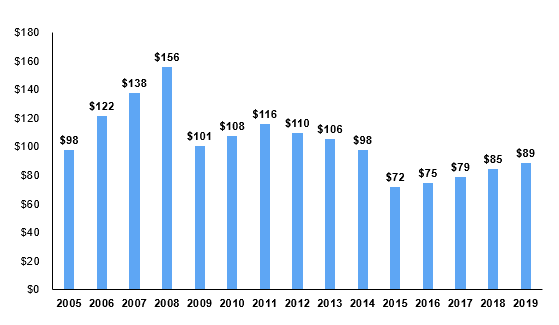JDRF released its 2019 audited financial statements on February 14th. These are the first financial results published under CEO Aaron Kowalski, who started April 9th. In a December 2019 speech to JDRF donors and volunteers, Kowalski stated, “we need to fund more research.” This report examines whether JDRF delivered on that promise.
Key Takeaways:
- JDRF's total annual revenue for 2019 tied a 15-year record-high at $232m. The previous $232m record was reported in 2008. See Appendix A.
- In 2008, research grant spending as a percent of total revenue was 67%. Comparatively, in 2019, it was only 38%. This remains a significant concern for all in the T1D community interested in T1D research funding. See Appendix B.
- Furthermore, research grant spending as a percentage of total revenue has remained at significantly lower levels for five years in a row, as compared to the previous decade. See Appendix B.
- Total JDRF research grant spending was $156m in 2008, compared to $89m in 2019. See Appendix C.
- One moderately positive trend is that total research grant spending has increased over the past five years from $72m to $89m.
- The increase in total JDRF research grant spending appears to be tied to JDCA advocacy, who began publishing JDRF financials and raising concerns directly with JDRF leadership in 2015.
- The JDCA remains hopeful that JDRF will restore both total research grant spending and grant spending as a percent of revenue to 2008 levels.
- In the weeks ahead the JDCA will publish additional reports analyzing administration costs, JDRF mission alignment, payroll, and revenue/ expenses.
Appendix A: JDRF Total Annual Revenue (in millions)

Appendix B: Research Grant Spending as Percent of Total Annual Revenue

Appendix C: JDRF Total Annual Research Grant Spending (in millions)

